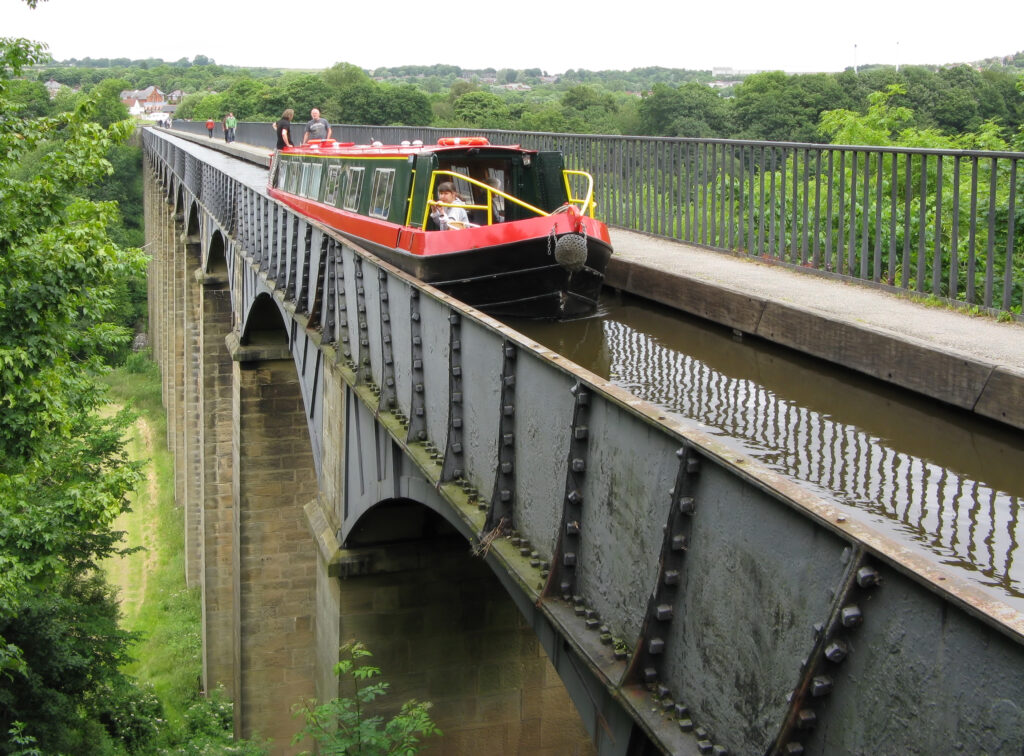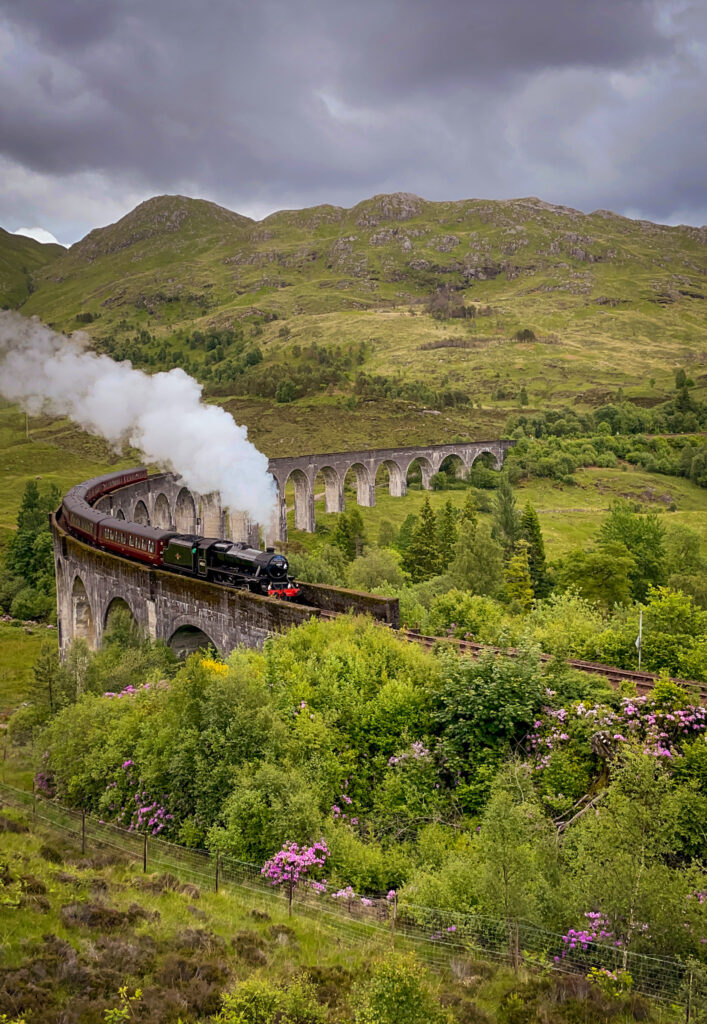Britain never fails to surprise: medieval pubs haunted by ghosts, foxes strolling calmly through Tube platforms — and of course, the architecture. Especially the bridges! These aren’t just crossings over water; they’re architectural curiosities, technical marvels, and aesthetic oddities on stilts. Some look like art installations, others like time machines. Let’s take a walk across the most unusual bridges in the United Kingdom.
Between Two Shores: The Strangest Bridges in Britain
Falkirk Wheel, Scotland
Not quite a bridge in the traditional sense, the Falkirk Wheel is something far stranger and more futuristic — a hybrid of an escalator and a Ferris wheel. Imagine a colossal structure the height of an eight-storey building slowly rotating, lifting boats from one canal to another like a giant watery carousel.
The Falkirk Wheel is the only one of its kind in the world. Opened in 2002 by Queen Elizabeth II, it weighs over 1,800 tonnes, yet is so perfectly balanced that it only needs about 3kW of energy to turn — roughly the same as boiling sixteen kettles. It connects two canals separated by nearly 24 meters, once joined by a long series of locks. What began as a practical solution became a dazzling attraction for tourists and boaters alike.
Clifton Suspension Bridge, Bristol
At first glance, this looks like a classic suspension bridge. But there’s something unusual about it — and if you look closely, you’ll see: it stands strangely alone. Instead of serving as a bustling city artery like most grand bridges, the Clifton Suspension Bridge spans a scenic Avon Gorge, linking two dramatic cliffs. It seems made not for speed, but for slow, contemplative crossings — an engineering marvel suspended in time.
Construction took 33 years. It began in 1831 but was halted due to political unrest. It was only completed after the death of the engineering genius and industrial-era titan Isambard Kingdom Brunel, based on his early designs. Today, it’s more than a bridge — it’s a tribute to Victorian engineering romance. Curiously, in the 19th century, it also became a “bridge of final decisions,” often chosen by those ending their lives.
Pontcysyllte Aqueduct, Wales
A bridge that carries… a canal. That’s right — no cars, no trains, just boats. Built in 1805, the Pontcysyllte Aqueduct links canals in North Wales and passes high above the River Dee valley — like a waterway in the sky, 38 meters up. It’s a walk for those who enjoy heights and surreal moments made real.
Despite its quirky appearance, the Pontcysyllte Aqueduct is no gimmick. It was designed by Thomas Telford, another giant of the Industrial Revolution. He boldly used cast iron instead of stone, which at the time was almost heresy. The canal is held in a cast-iron trough sealed with ox fat and coal dust, supported by 19 stone arches. On the canal side: no railings, no barriers — just water, a narrow footpath, and the abyss on the other side. Dizzying — and stunning.
Rolling Bridge, London
This little structure is one of London’s true oddities. To let boats pass, the Rolling Bridge doesn’t simply rise — it curls up like a giant metal caterpillar. Powered by hydraulics, its eight segments fold into a tight octagon, opening the waterway.
Built in 2004 by Thomas Heatherwick — the same designer behind the new red double-decker bus with the zigzag window — this tiny pedestrian bridge in Paddington became an architectural spectacle. It only operates at set times, and crowds gather just to watch it curl into a ball, as if it were alive. It teases passersby: “Think you’ve seen everything? Think again!”
M8 Bridge to Nowhere, Glasgow
In the transport revolution of the 1960s, Glasgow dreamed of becoming a city of the future. Construction began on the massive M8 motorway, complete with interchanges, flyovers, and layered roads. But the project went too far. Part of it was halted and, as often happens, indefinitely frozen. One bridge now hangs in the air — cut off, leading nowhere.
Locals named it the “Bridge to Nowhere.” Efforts to demolish or complete it failed. Today, it stands as an unofficial monument to architectural overconfidence. At one point, someone even installed a park bench at its edge, facing the void. Art, perhaps?
Glenfinnan Viaduct, Scotland
This historic bridge is instantly recognisable to Harry Potter fans — it’s the one the Hogwarts Express crosses in the films. But even without its cinematic fame, the viaduct is awe-inspiring. Built in 1898, it stretches 380 meters across a mountain valley, supported by 21 concrete arches. Surprisingly, despite its massiveness, it appears light, almost airy.
At the time, the use of concrete was so novel that locals feared it might be toxic to livestock and kept animals away from the site. Built without any metal reinforcement — just concrete and engineering intuition — the bridge still carries steam trains filled with tourists retracing Harry’s route. Glenfinnan Viaduct is a bridge made for poetry, film, and photographs amid the misty Scottish hills.
***
Sometimes a bridge is more than just a crossing — it’s a desire to reach, to connect, to overcome. And Britain seems to understand this better than most. From spinning wheels to watery viaducts, from joke bridges to illusions in steel, the UK is full of strange and wonderful crossings. You get the feeling they weren’t built for convenience — but for the idea. And maybe that’s the most important thing of all.











